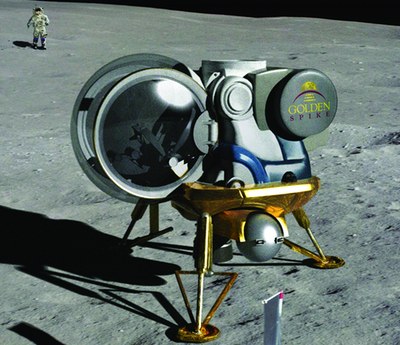Back to the Moon, commerciallyby James Lovell
|
| Until now I have been very doubtful and, indeed, critical of many existing commercial space ventures that are largely funded by taxpayer dollars. But I became convinced that we truly are on the cusp of a brand new era of commercial lunar space travel. |
It is hard to imagine that four decades after Neil Armstrong took that “giant leap for mankind,” a human presence on the lunar surface is just a distant memory and the Moon remains largely unexplored. No doubt, America’s space program has gone on to some remarkable achievements: Apollo-Soyuz, Skylab, the Space Shuttle, the Hubble Space Telescope, Mars rovers and the International Space Station—a lasting home in space occupied by a global crew 24/7, 365 days a year.
But for many people, including old astronauts like myself, the human exploration of the Moon remains America’s crowning achievement amid the stars. It is certainly an event worthy of repeating, and many of us have long argued for sending new generations of explorers back to our closest celestial neighbor as a first step toward developing the skills and technologies needed to travel deeper into our own solar system.
Sadly, it hasn’t happened, though not for a lack of trying. A series of false starts, dashed attempts, and woeful budget shortfalls have meant that government-led efforts to return humans to the Moon have foundered on the ground. Some in Congress are at this very moment talking once again about forcing NASA to establish a program to sustain a human presence on the Moon. I, unfortunately, am not optimistic as we have been here before.
But there is hope. The private sector is stepping up to meet the challenge: an ambitious startup, the Golden Spike Company, is leading the way in creating commercial models to mount human expeditions to the surface of the Moon for nations, companies and individuals (see "Turning science fiction to science fact: Golden Spike makes plans for human lunar missions", The Space Review, December 10, 2012).
Until now I have been very doubtful and, indeed, critical of many existing commercial space ventures that are largely funded by taxpayer dollars. But after several meetings with Golden Spike executives, including the chairman of its board—my old friend—former Apollo flight director Gerry Griffin, I became convinced that we truly are on the cusp of a brand new era of commercial lunar space travel.
| NASA itself should look carefully at what Golden Spike is doing and incorporate its plans into America’s national space ambitions. |
Golden Spike’s plan is to use existing rockets and emerging commercial crew spacecraft to lower the cost of a two-person expedition to the lunar surface to roughly the price of current robotic missions to the Moon. Golden Spike would only develop new systems, such as a lander and surface suits, where no existing system exists or is in development. Such an approach offers enormous cost, schedule and reliability advantages. And it’s viable. Market studies done for Golden Spike show the possibility of 15–20 expeditions in the decade following a first landing.
The idea of an American aerospace firm orchestrating important scientific and exploratory missions for government space programs around the world, as well as corporations and adventurous individuals, is extremely exciting. I was so convinced that I am now an advisor to the company as it progresses through its first wave of lunar lander and spacesuit studies.
Such efforts need to be applauded and supported by policymakers, investors and entrepreneurs across the country in recognition of Golden Spike’s bold vision and the patriotic role the company is playing in restoring American leadership in space. In fact, NASA itself should look carefully at what Golden Spike is doing and incorporate its plans into America’s national space ambitions. The agency, in my opinion, should be among Golden Spike’s first customers and biggest allies.
As the company said in its debut press conference last December, Golden Spike is not about America going back to the Moon but about the American entrepreneurial spirit leading the rest of the world to the Moon. I say let’s all get onboard and return to where we belong.
